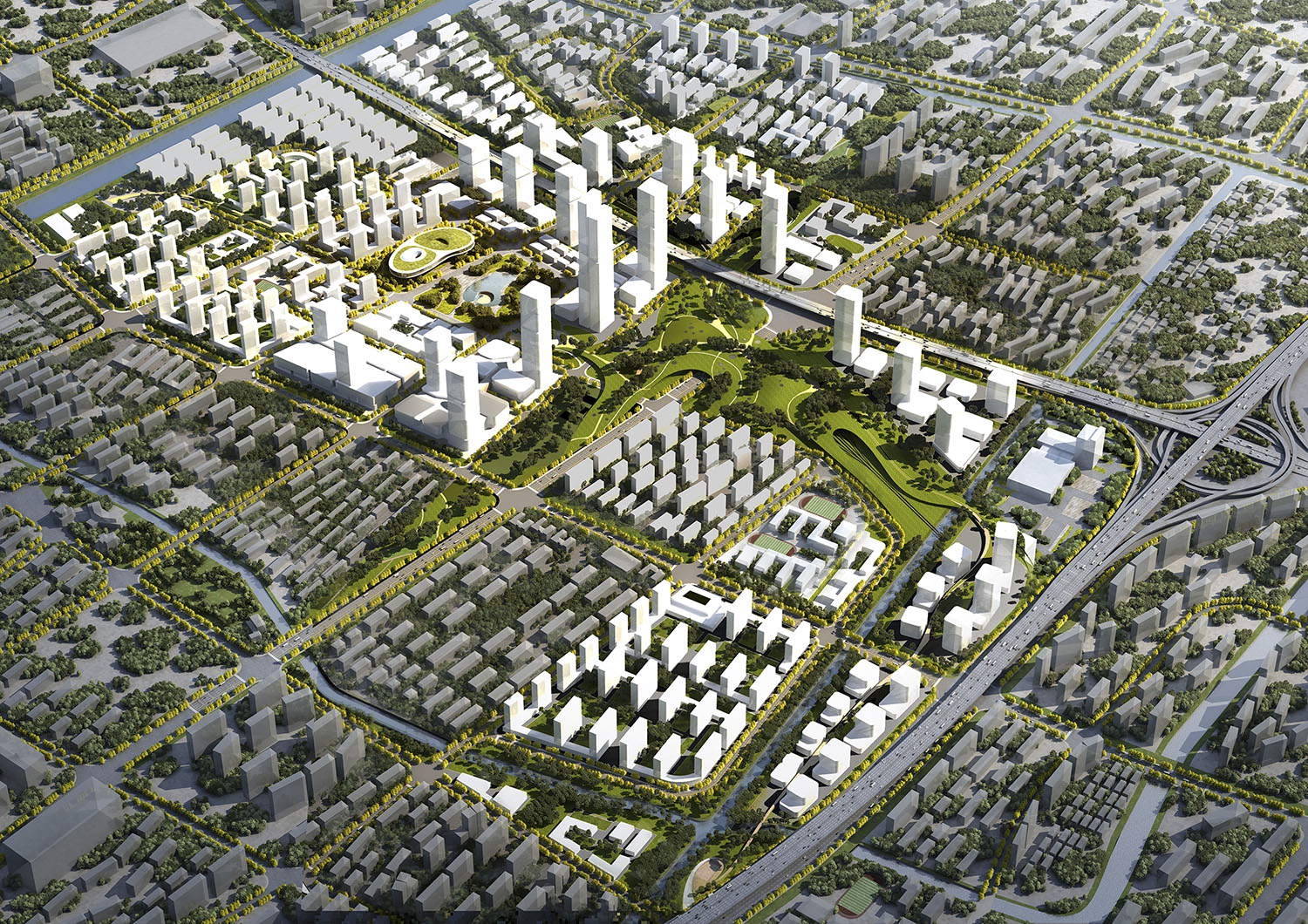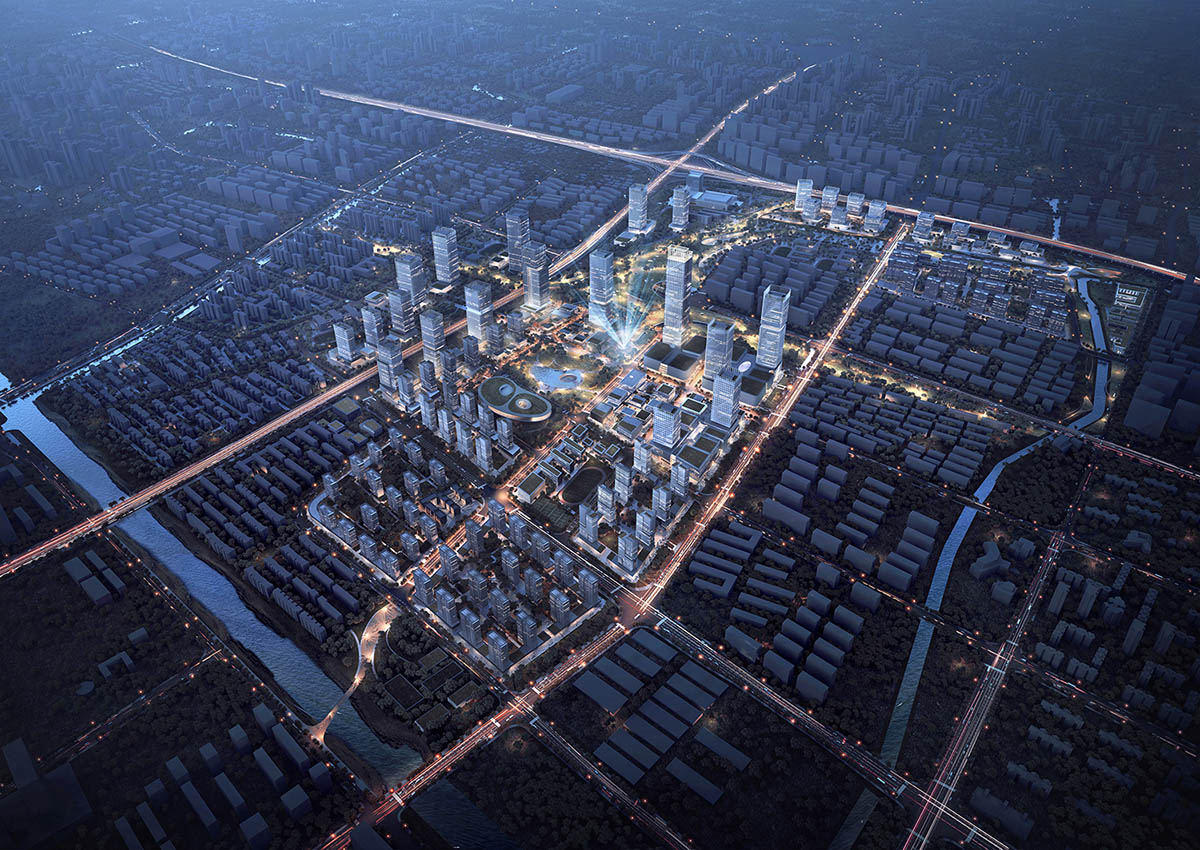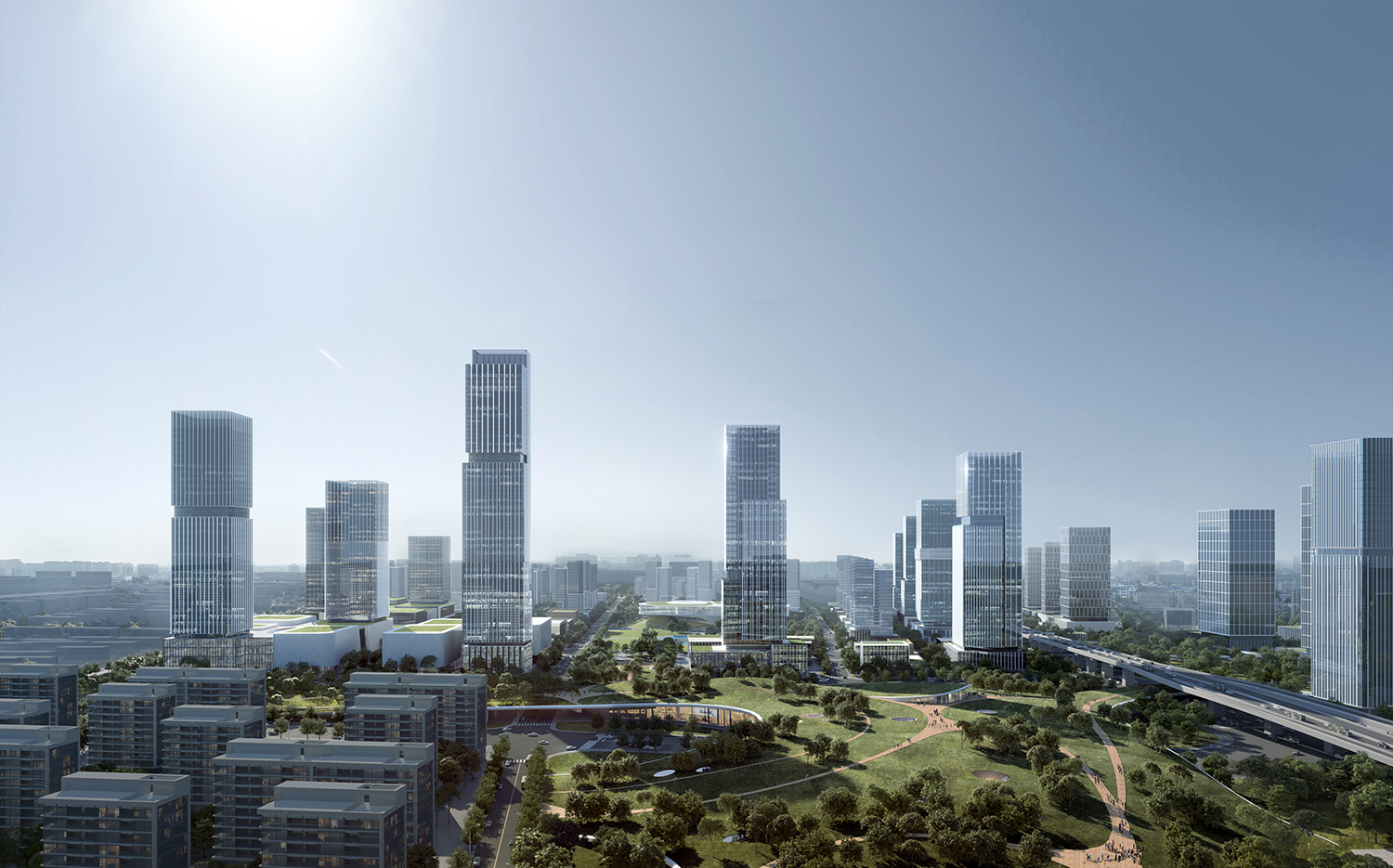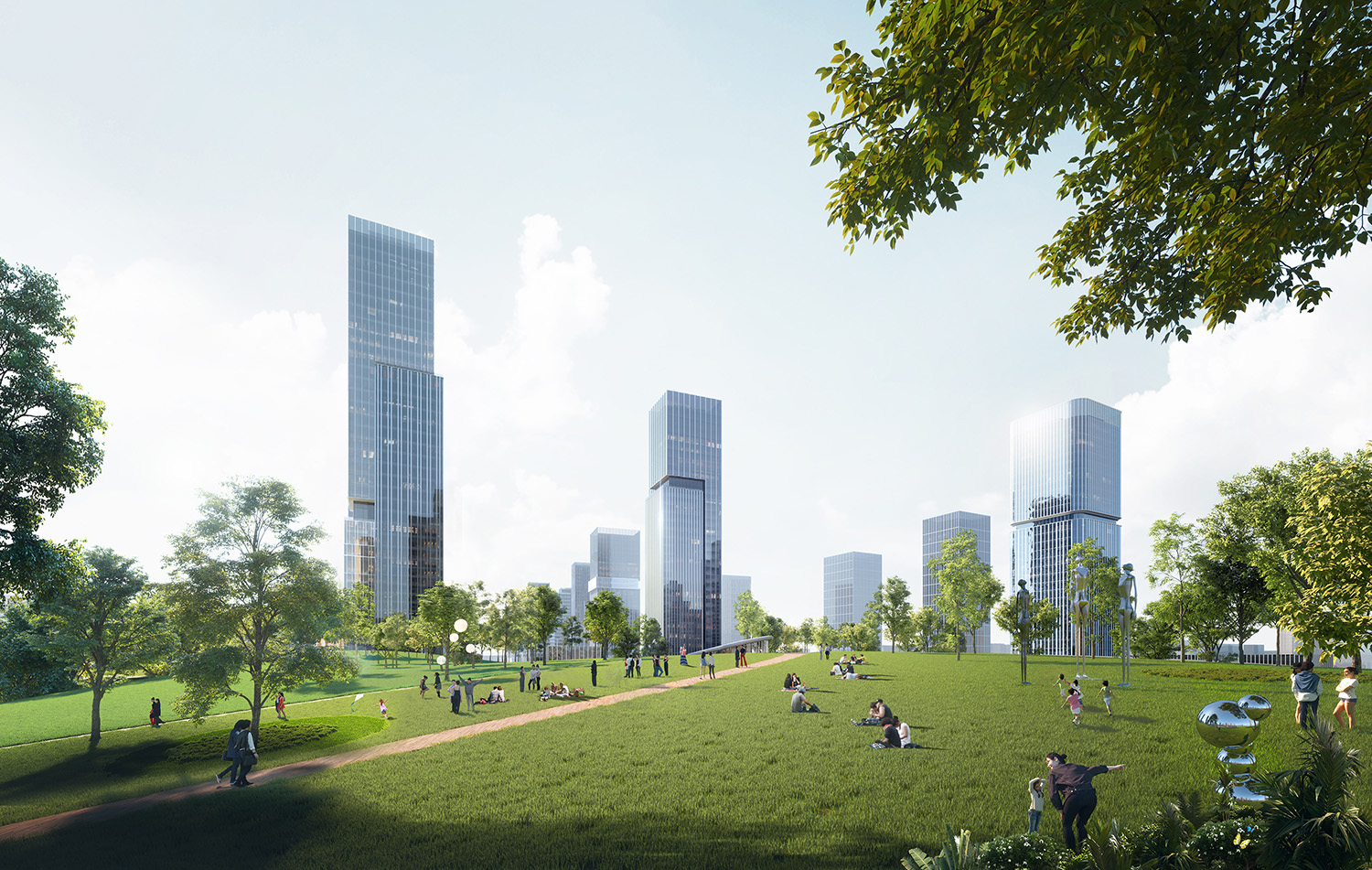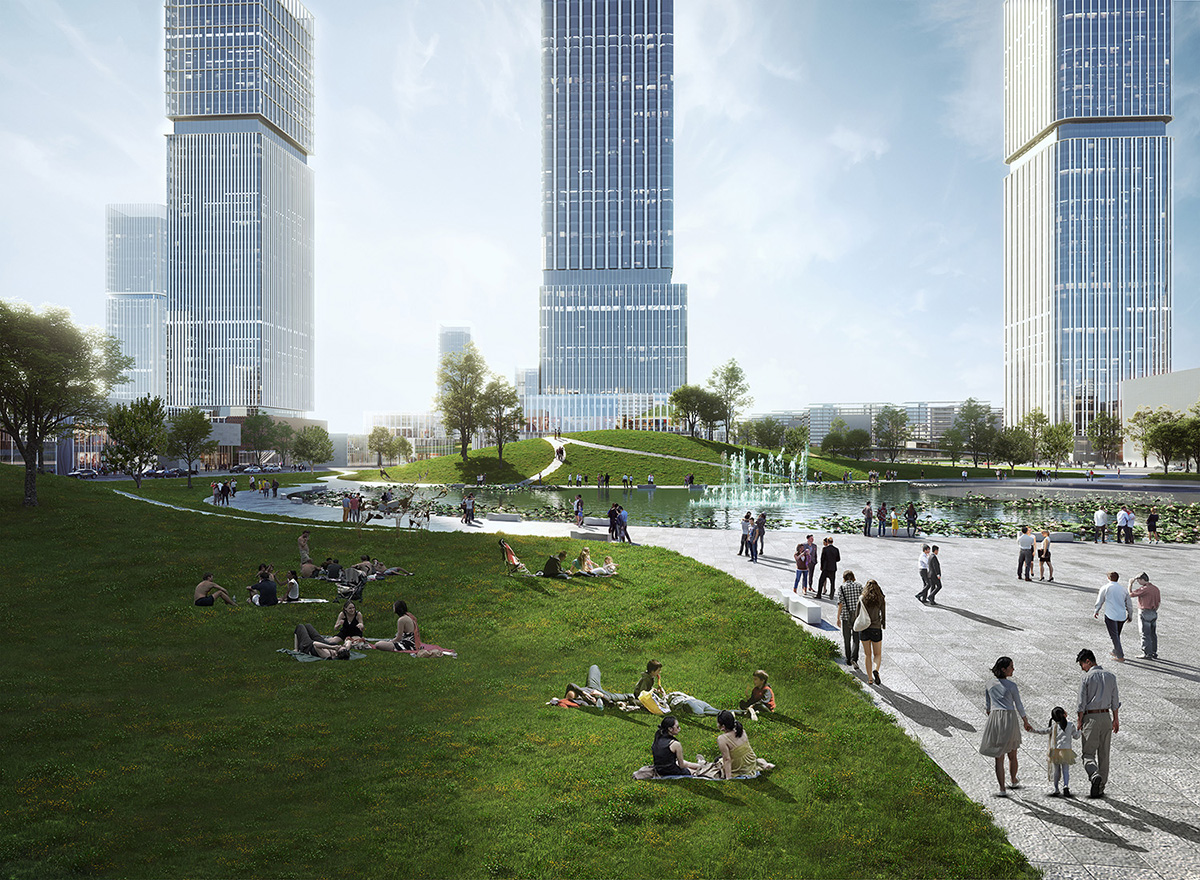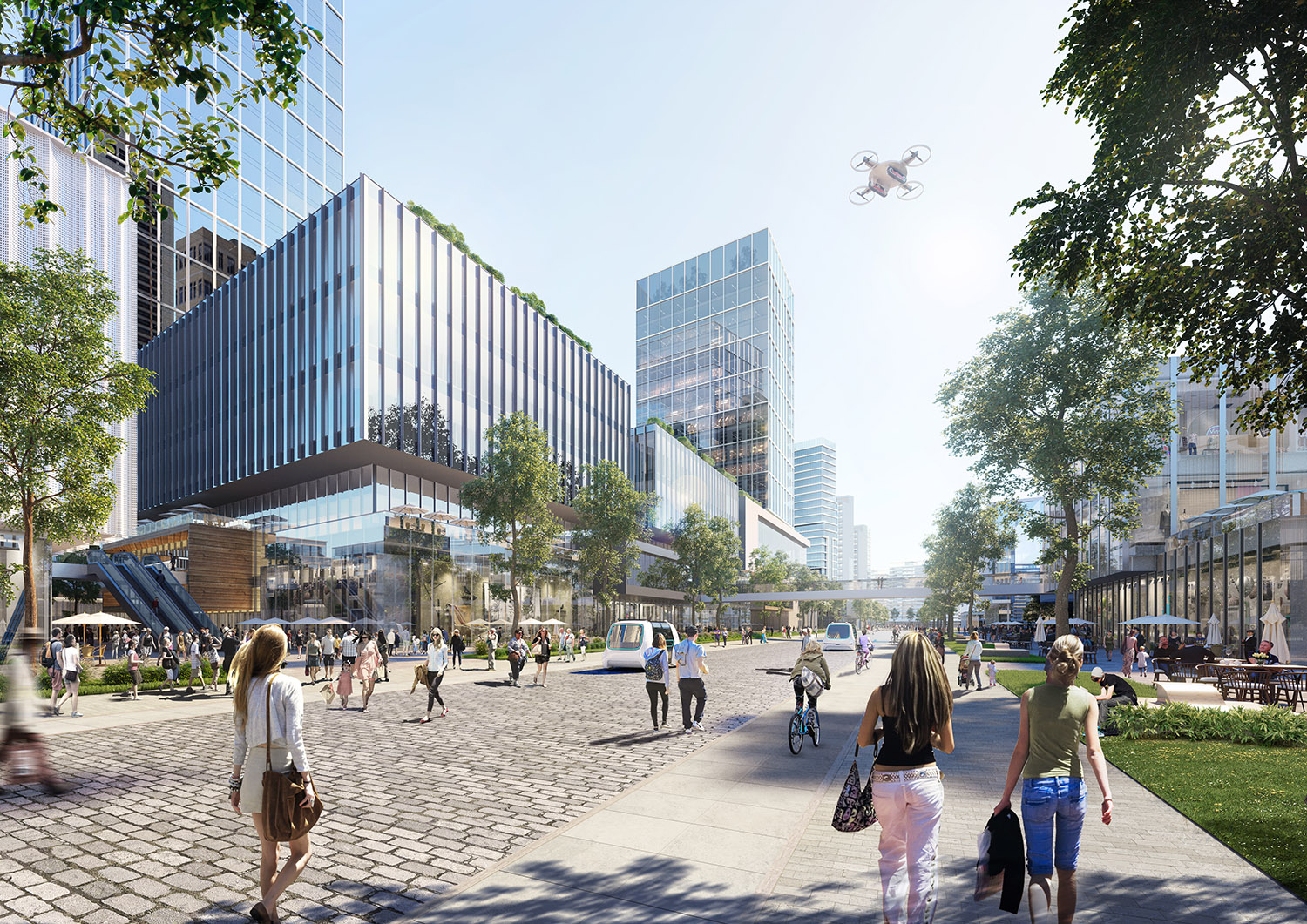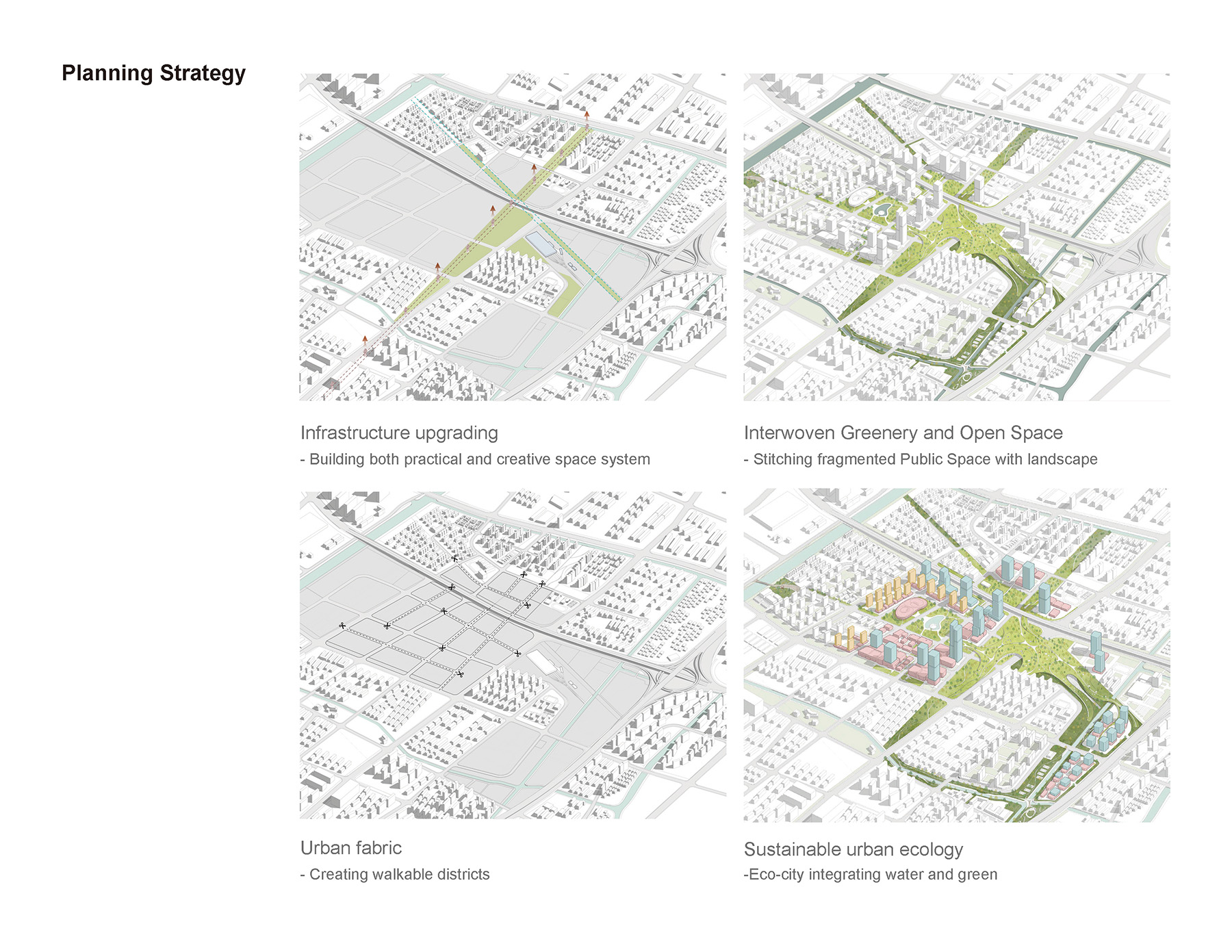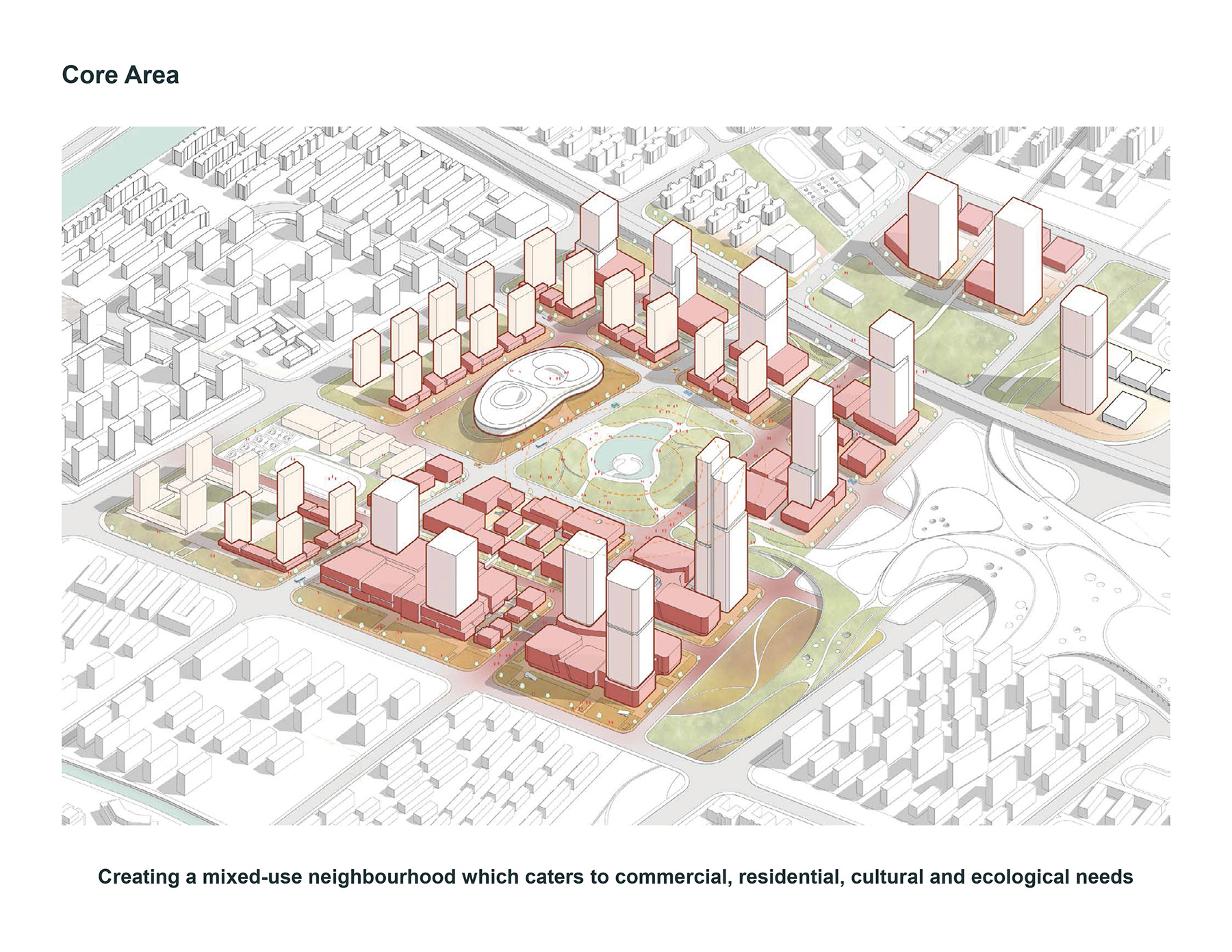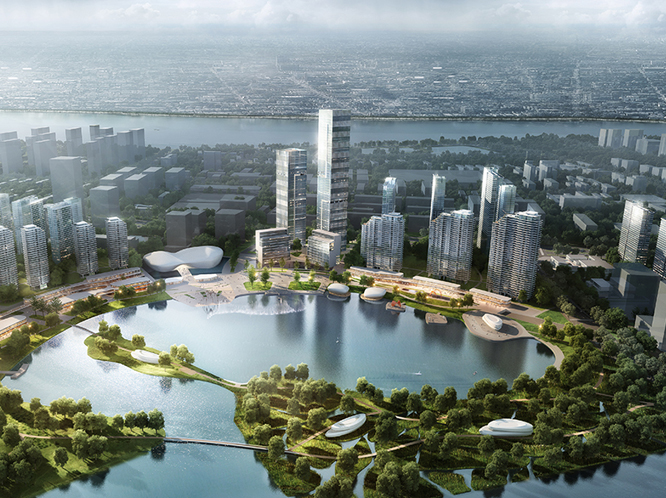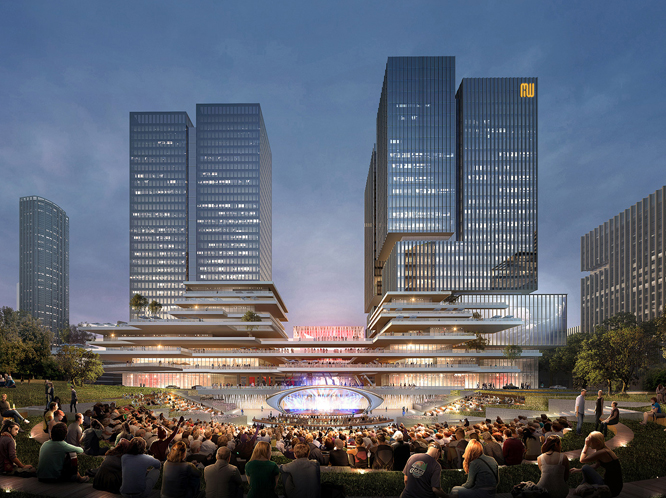
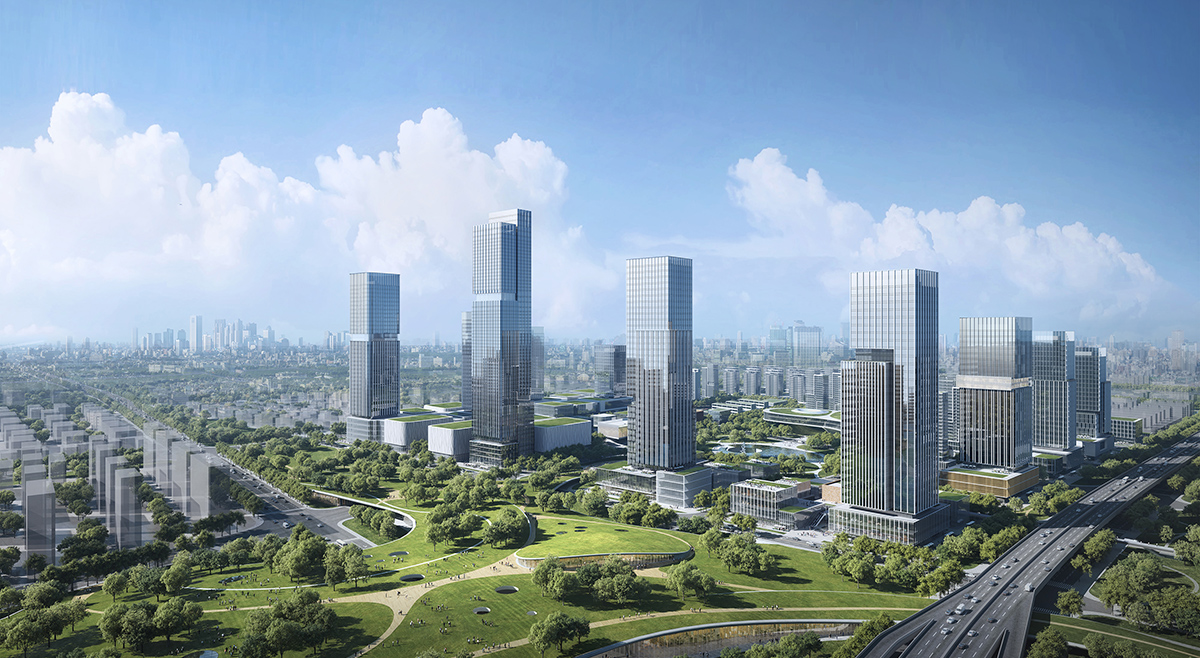
Location: Shanghai, China
Design Principal: Ping Jiang, FAIA
Client: Shanghai Pudong Development (Group) Co., Ltd
Planning Area: 189 hectares
Type: Urban Design
Design Team:
Michelle Bao, Xiaohai Lin, Hongyi Zhuang, Junfeng Mao, Jinjing Yu, Yangxunxun Zhou, Chendi He, Cheyinzi Jiang, Di Fan
New Yangsi District Master Planning is a strategic planning framework for the future large scale urban development currently undergoing in the city of Shanghai, China. This urban planning guideline aims to design a sustainable urban future for a vast area of approximately 1.89 square kilometers, envisioning a large-scale mixed-use development integrated with landscape, open space and infrastructure.
Located in Pudong New District, Shanghai, the New Yangsi area situates at the intersection of two major urban development zones, Golden Central Ring Development Zone and Yanggao Road Business Corridor, adjacent to Chuanyang River in north and Middle Ring Elevated Expressway in south. With a design area of approximately 2 million sq. meters, this project is one of the largest-scale development sites in the city. The growing demand for improving transportation, civil infrastructure and supporting facilities in the surrounding areas brings the site the potential to become a new central business district in Shanghai with higher standard of living and business opportunities.
The public facilities around the site are limited, and the fragmented public spaces causes less accessibility to them, which falls behind the demands of the residents. Reconnecting the fragmented urban fabrics, one main feature of the master plan is to turn the lost urban spaces where were originally cut off by high voltage electrical transmission lines and subway lines. The design is based on the “Infrastructural Urbanism”, exploring a unique sustainable urban design in China. In the future, it will become a new central business district in Shanghai.
The core area takes advantage of the existing and planned transportation services through metro lines to link and integrate the area to other regions of the city and create a mixed-use neighborhood which caters to commercial, residential, cultural and eco-friendly demands. The urban development project is focused on creating a nexus of landscape spaces to build a vibrant ecological city.
The project dismisses large-scale street block design which conventionally supports automobile as a mode to move around the city due to large distances. It aims to build small pedestrian-friendly blocks which is essentially more people-oriented. Majority of the blocks adopt a modular scale ranging between 100 to 200 meters in length, which alleviate the traffic congestion on arterial roads, and ensure pedestrian safety.
